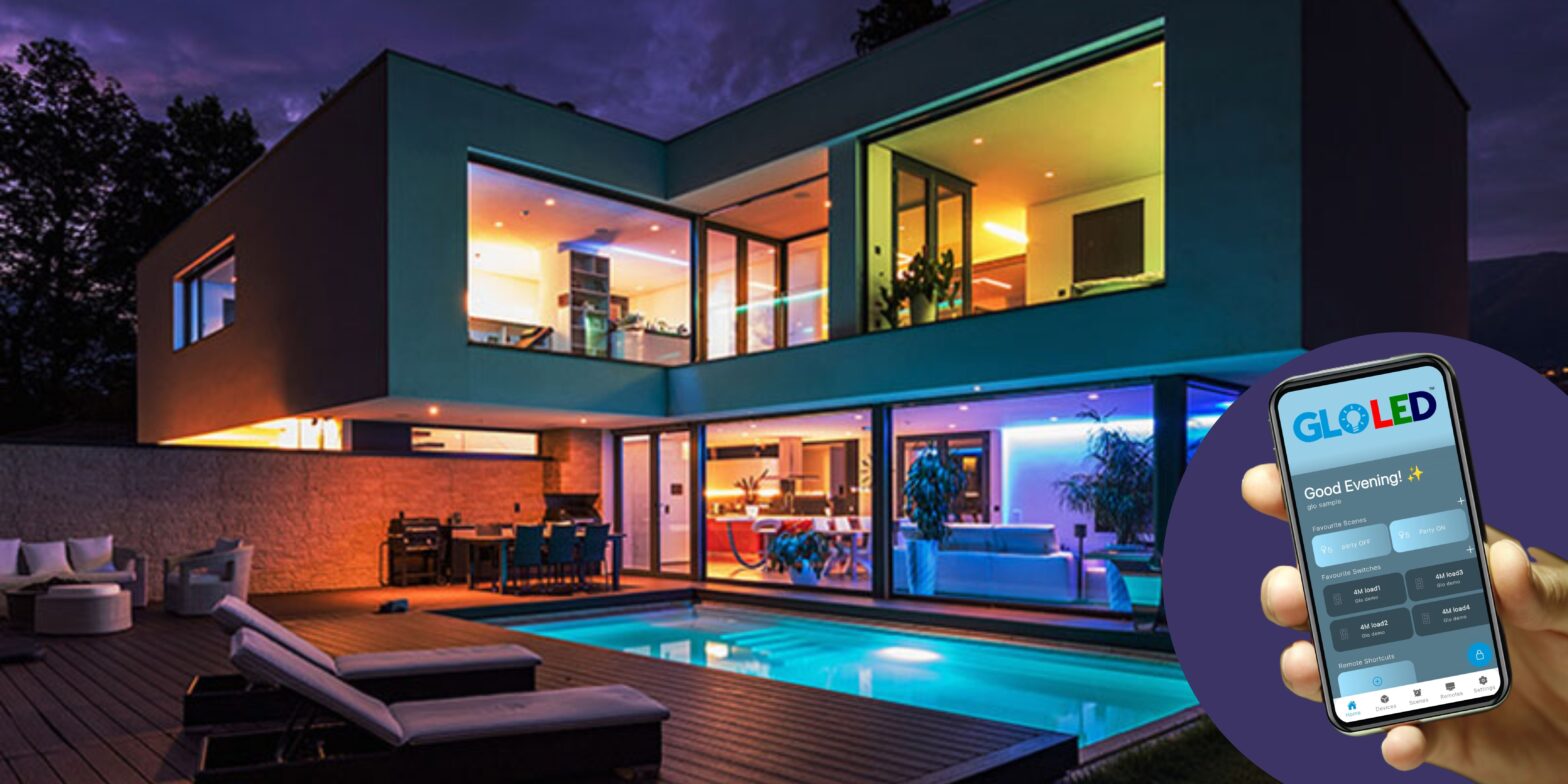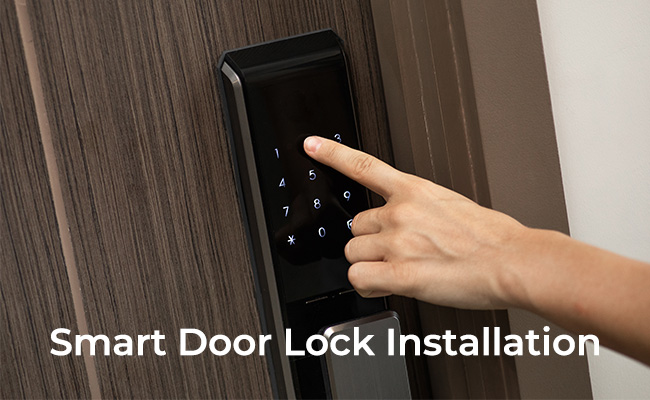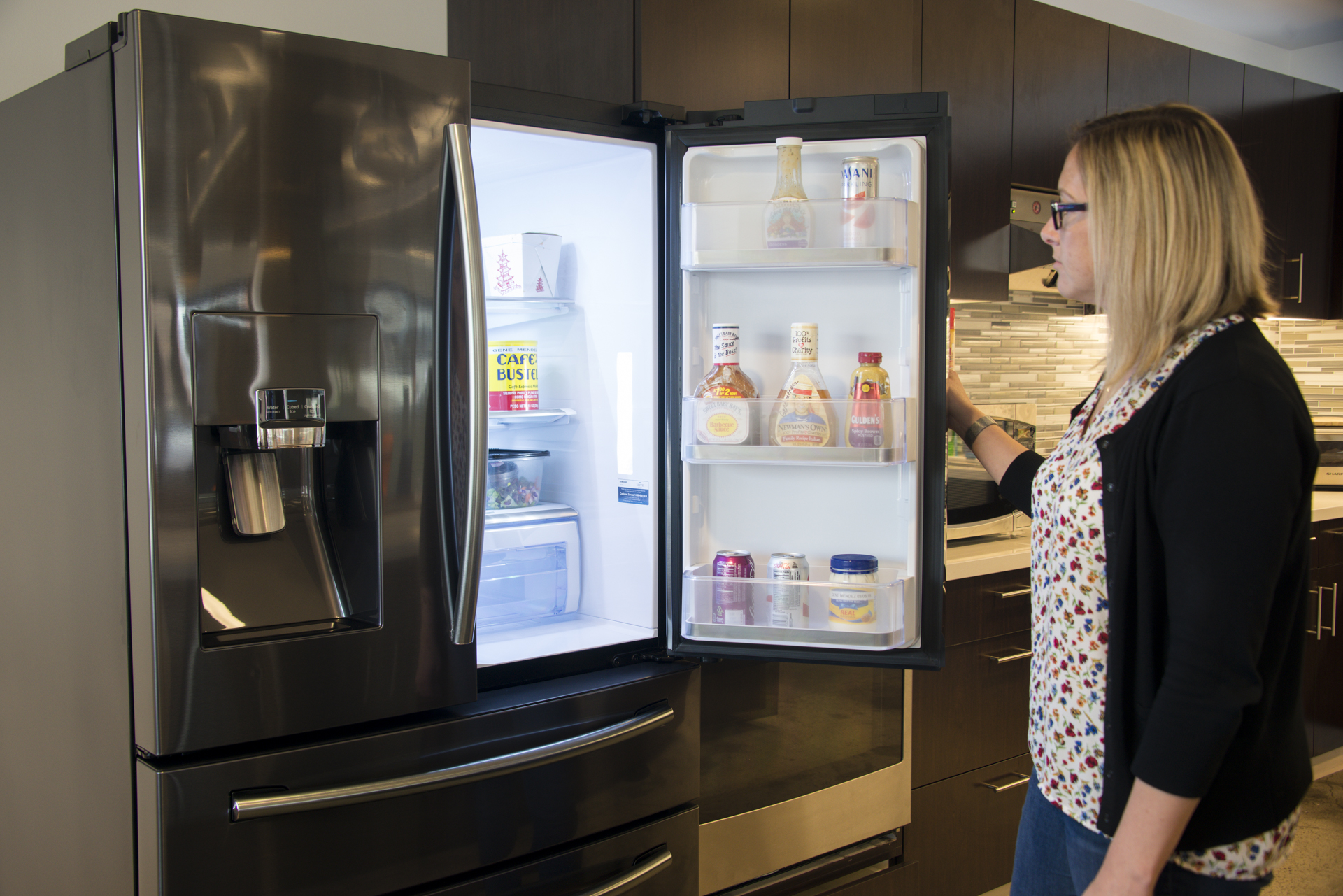How do I change my house to a smart home?
1. INSTALLING SMART LIGHTS
Our relationship with lighting has been basic for a century. On and off and on again. Smart lighting alters everything. You may now manage your lighting in a way that was previously only possible in sci-fi. Use your smartphone to control the lights in your home from thousands of miles away, or even just have them respond to your voice or presence.
Although it may sound like a technology from the far future, it is present now and will remain so. Smart lighting solutions allow you to control your lights using a smartphone app and connect to your home Wi-Fi network. Individual light bulbs can have their color temperature changed, or their entire color can be altered.
2. INSTALLING SMART LOCKS
A smart lock is a Wi-Fi or Bluetooth-enabled smart home device that enables users to lock and open doors with a simple voice command or fingerprint detection, allowing them to leave their house keys at home. Even when you’re at work, you may unlock a door to let a visitor in thanks to smart locks’ remote access feature.
How Effective Is a Smart Lock? With customizable options and capabilities built to offer you control over what happens to your house, smart locks have created a new home security experience. They are far more powerful than regular locks.
For installation, you will replace the old lock, and the latch, however brand-specific installation procedures may differ. When you have finished, configure the device with the necessary app.
3. INSTALLING A SMART REFRIGERATOR
Every smart home must have a smart refrigerator. An internet-connected refrigerator is a “smart refrigerator.” A smart fridge may offer several different useful functions, depending on the model and brand you select.
The majority of manufacturers of smart refrigerators provide a smart home app that can be downloaded and installed on a phone or other mobile device, enabling the owner to view updates on their fridge from a distance.
Internal cameras, more flexible user-controlled cooling options, and remote access to the refrigerator’s functionality through a smartphone or tablet are all aspects of smart refrigerators.
4. INSTALLING SMART SPEAKERS
What makes a speaker smart is its ability to link to other smart home appliances and mobile devices like smartphones. In other words, you can connect the speaker to your Wi-Fi network, operate it with an app on your phone, and feed it audio files like music or podcasts – usually using a Bluetooth connection, but occasionally also streaming via Wi-Fi.
Smart speakers go beyond regular speakers. For instance, voice commands can be used to control the voice assistant that is typically included in today’s smart speakers. They can use this to conduct online searches, create lists or reminders, and engage with several voice assistant features, including games, jokes, and guidance.
Smart speakers are some of the greatest places to offer access to a voice assistant because they often feature Wi-Fi connections (sometimes Bluetooth), speakers, and mics. A voice assistant is nearly always integrated into stationary smart speakers.
5. INSTALLING AUTOMATED GATES IN YOUR SMART HOME
Electric or automatic gates are becoming more and more common in modern times. The gates used to represent the social order, but today they stand for home security. An automated gate has electric motors installed and can be opened using a phone app or remote control.
When it’s raining and you don’t want to get out of your car to open the gate or when you’re inside your home and you want to quickly let your guests inside, you can use the transmitter to send an order to open or close the gate.
Buildings for residential and commercial use gain ease and security from it. Swing gates, sliding gates, and trackless folding gates are the three most common styles of automated gates. Which model you choose will depend on your needs and your budget.
6. PURCHASING A SMART TV
An internet connection, which gives it access to a world of opportunities, is the key feature separating smart TVs from less-smart TVs. Since almost all current smart TVs include an Ethernet connector, built-in Wi-Fi, or both, and because the newest models are powered by a variety of advanced and potent operating systems, processors, and software, today’s TVs are more similar to smartphones or computers than ever.
In essence, a smart TV connects directly to the internet and includes an operating system or platform that enables you to access, manage, and view online and network-based media content like Hulu or Netflix without the use of a separate device like DSTV, Strong, or any other number of devices. This is a must-have smart home device since it could double and serve multiple purposes.
7. INSTALLING SMART SWITCHES IN YOUR SMART HOME
Most people don’t even give light switches a second thought, but if you decide to equip your house or place of business with smart switches, that may all change. These sophisticated digital gadgets have the potential to be crucial parts of a robust network of connected smart home technology.
While still fitting into the spaces and back boxes occupied by your existing wall switches, smart switches give your home tech-powered functionality. This makes them incredibly practical.
These switches still operate as standard light switches, but they also have some clever features, such as smart dimmer switch functionality, additional buttons for finer control, remote control functionality for adjusting lights while moving around, and the capacity to control other appliances and respond to voice commands.
8. INSTALLING A SMART SECURITY SYSTEM
Everyone knows that it is super important to put the security of your home first. Home security systems make the safeguarding of your house simpler.
A home security system is a collection of tangible electrical parts that cooperate to safeguard a house. Often, a smart home security system will consist of security cameras, motion sensors, entry sensors, sirens, and many more.
All of the parts are connected to a base station in the majority of home security systems. From there, users link to a smartphone application, which enables remote monitoring and management of everything. Most devices link to your phones via Bluetooth, Wi-Fi, or cellular networks. In the event of a power loss, other systems opt to include a landline or battery backup.
9. PURCHASING VACUUM CLEANER/ SMART CLEANER
Up until recently, using a vacuum cleaner was a process that needed manual labor, time, and upkeep, all of which could cause you to entirely skip on the task. The procedure becomes even more difficult for persons who live alone.
Robot vacuum cleaners are the answer to all of these issues because they can clean and recharge by themselves and are simple to use with a smartphone. It is stress-free and embraces all that technology is about that is, making everyday life easier.
10. INSTALLING A VIDEO DOORBELL
video doorbell is a more descriptive name than “smart doorbell.” As you might expect, a video doorbell allows you to see who is at the door without having to physically stand there.A video doorbell is more than just a video camera attached to a doorbell.
It can also provide two-way communication with whoever is at your door, acting as an intercom so you can speak to whoever is nearby. Smarter video doorbells also communicate with smartphone apps to notify you when someone is at your door when a package has been delivered, or if someone is attempting to steal from you.




Comments
Post a Comment